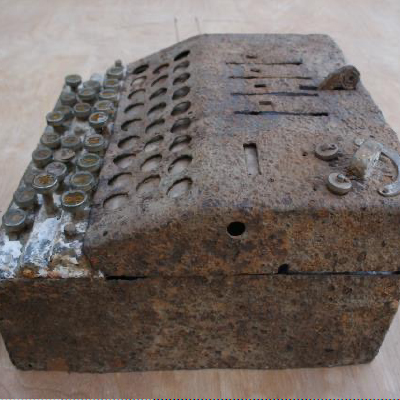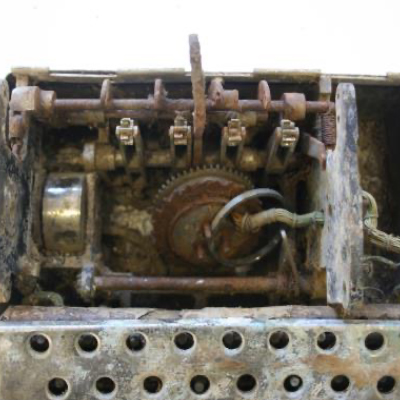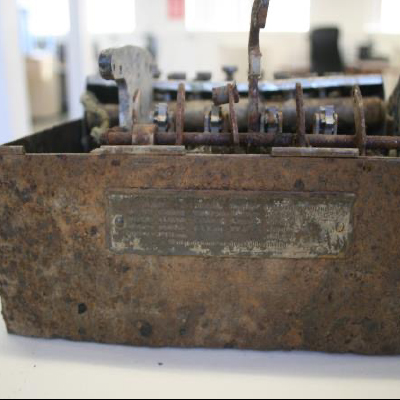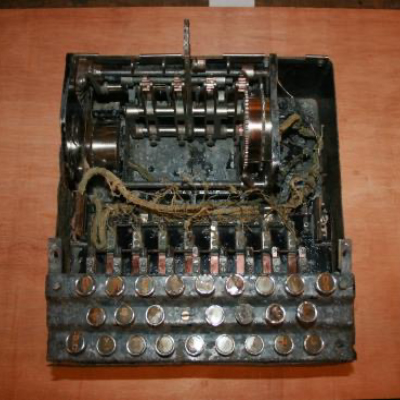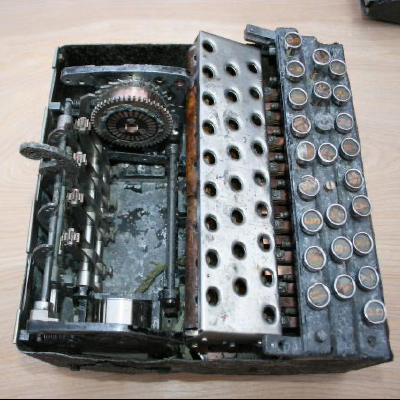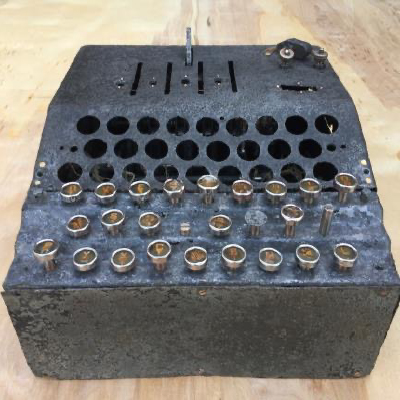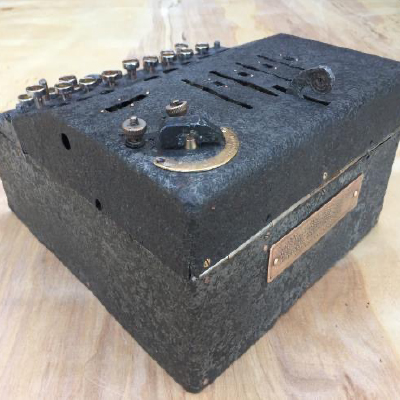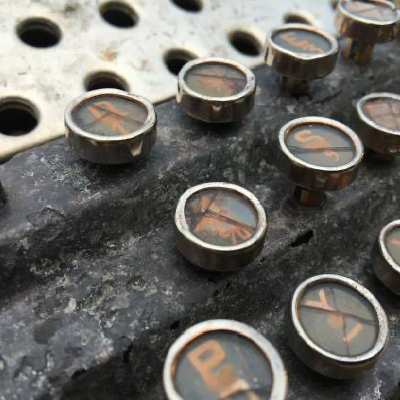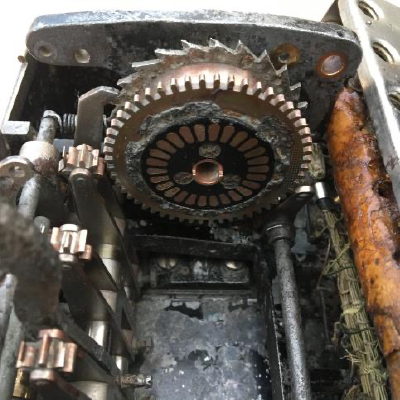Enigma Machine
This rare Enigma machine was found buried in the ground in Poland and was assumed to have been secreted there by retreating German forces.
ICR carried out a comprehensive and highly sensitive conservation methodology to provide long-term stability and interpretive enhancement
Although the machine appeared to be in an advanced state of deterioration and degradation it was surprisingly stable and did not show any immediate signs of core structural failure of loss of physical integrity. The condition was directly proportional to the time the machine had spent buried underground and therefore realistically had survived remarkably well. It appeared as if the machine may have been partially vandalised or immobilised before being buried so to render it unusable by allied forces. –This was quite common practice amongst retreating army units
The buried condition was powerful, suggestive, emotive and fundamentally indicative of human endeavour in defeat when an object of such power becomes an object of despair and failure which could have led to death if captured in possession. The condition of buried objects can often benefit from un-detection and environmental insulation provided by compacted soil, flora and fauna by limiting the exposure to damaging swings in temperatures, relative humidity and oxygenating corrosion products.
Of great significance and in some unusually rare circumstances the physical condition of an object, albeit severely compromised, can positively contribute to the display and outreach potential. The juxtaposition of the condition of a buried object in an un-conserved state when compared directly with that of a similar object in show condition provides exciting interpretive messages
Unquestionably all the elements and components that make up the machine were severely degraded and had deteriorated significantly but a close inspection did not reveal any serious active corrosion or bi-metallic action. In addition to the expected ferrous corrosion and product delamination there appears to be a heavy deposit of compacted organic material consistent with an archaeological find. Many core elements have been displaced or lost which may have occurred at the time just before or during burial. The interior of the machine was heavily corroded and compacted with debris but many elements had survived incredibly undamaged. Non-ferrous and surface treatment plated components were in many instances in a very sound and clean condition.
A historic technological object affected by advanced corrosion, physical damage and material loss can often be viewed as having limited cultural worth, meaningful aesthetic appeal and or interpretive value.
As found the Enigma machine was significantly damaged, incomplete and appeared to be physically at risk; however the preliminary conservation assessment phase revealed that the machine was in a far more stable condition than initially thought which subsequently permitted a heightened level of physical intervention and depth of conservation treatment
Stabilising and consolidating the condition of the Enigma machine was paramount as the surviving historical integrity would provide the real contextual and cultural connection between a moment in time and Bletchley Park. The conservation treatment needed to consider a wide range of construction materials including ferrous and non-ferrous metals, glass/mica, ceramics, organics and electrical cabling. This was imperative because only very limited reverse engineering would be considered or attempted during the conservation treatment phase, all cleaning and stabilising techniques would have to perform sensitively within a mixed-material environment without causing any detrimental fallout or any irreversible cross pollution or migratory damage.
The conservation methodology was underpinned by 3 distinct considerations
Stabilisation
Consolidation
Aesthetic enhancement
The conservation strategy was sensitive and applied a low interventive approach which provided flexibility to retain the contextual and historical aesthetic value.
Low interventive conservation treatments are used to ensure the safe retention of original material and historical integrity and by doing so they lock in the physical connection between a point in time and an interpretive experience. The conservation process often provides a unique window on the life of an object
During a project a conservator hopes to find physical evidence that provides tangible evidence to confirm provenance, ownership and manufacture. This project hoped to uncover evidence to help confirm what variant type of machine had been discovered.
After the conservation cleaning phase was completed 4 distinct examples of original physical script was discovered stamped onto the machine body and internal mechanisms
Chiffrier M38
CH M47
46
110
There were numerous locations where original paintwork had survived including what appears to be traditional white lead primer and eggshell black lead topcoat.
|
|
|
|
|
|
|
|
|
|
|
|
|


